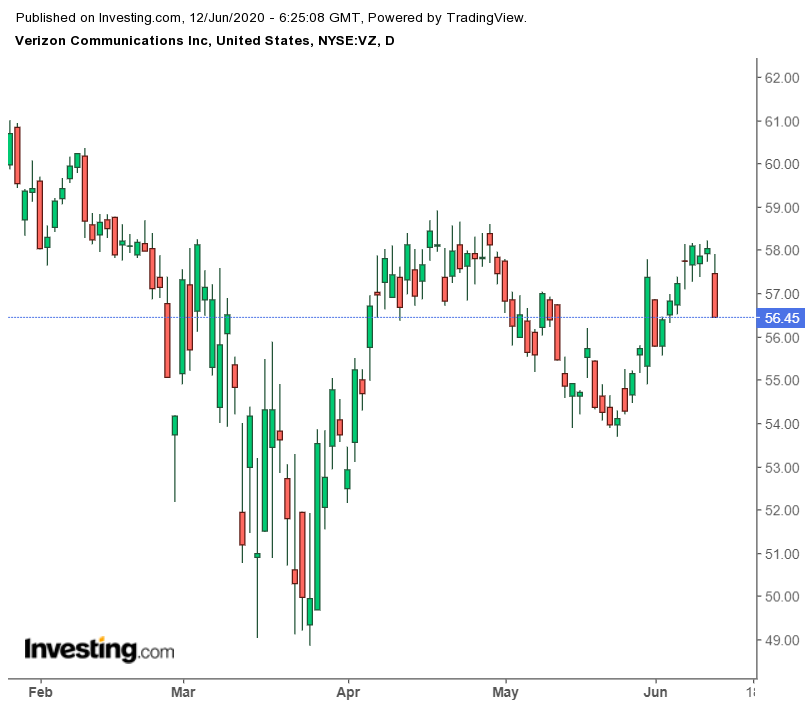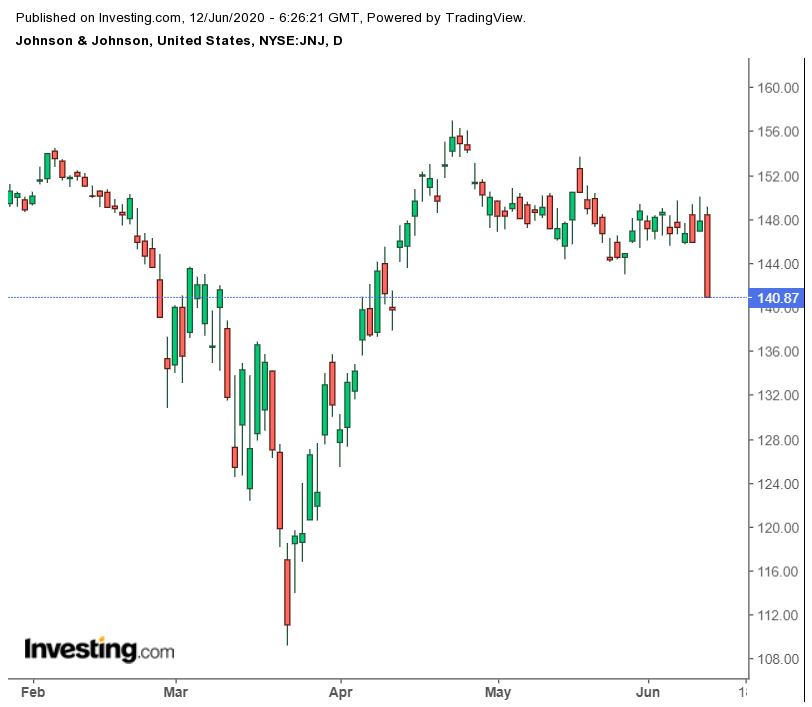U.S. Federal Reserve Chairman Jerome Powell made it clear this week that interest rates in the world’s largest economy will remain near zero in the foreseeable future, as he struggles to revive growth in an economy that has been ravaged by the COVID-19 pandemic, and bring back millions of jobs lost in this crisis.
Powell said:
“We’re not even thinking about thinking about raising rates,” he told a video press conference after the Federal Open Market Committee held its key interest rate near zero. “We are strongly committed to using our tools to do whatever we can for as long as it takes."
This dovish stance means that yield-hungry investors won’t be getting any income from lower-risk assets, such as government bonds, or the cash in their savings accounts. To find a reasonable return, they have to venture out and seek quality dividend-stocks whose pay-outs are both safe and offer higher yields.
Below, we have put together a group of three dividend stocks that we believe can sustain their dividends and provide a regular income stream.
1. Verizon
- Yield: 4.24%
- Quarterly payout: $0.615
Telecoms are considered a defensive play in times of uncertainty. In general, these companies regularly increase payouts and, in many cases, they've been boosting dividends regularly for decades.
Holding these shares over the long-term is a great way to ensure a steady flow income, with above-average yields, even when other areas of the market go through sharp adjustments.
In this space, we like wireless service provider Verizon (NYSE:VZ) . Instead of bulking up its balance-sheet with mega deals, Verizon has been focusing on improving its infrastructure. The company has avoided making the kind of "Big Entertainment" purchases that peers like AT&T (NYSE:T) have pursued.
Instead, Verizon has made smaller bets focused on ways to quickly improve its network. Due to its timely acquisition of Straight Path Communications in 2018, Verizon is ahead in the race to build a 5G network - part of an industry-wide effort to increase speed and open up new sources of revenue.
In April, Verizon made another smart acquisition when it announced the takeover of BlueJeans Network, a privately held videoconferencing rival to Zoom (NASDAQ:ZM), which has become the face of at-home work during the pandemic, and boasts a market value of $42 billion.
With its strong balance-sheet, growing dividends and leading position in the 5G rollout, Verizon is a solid—and comparatively safe—income choice for long-term investors looking to shield their portfolios from ongoing market volatility.

2. Royal Bank of Canada
- Yield: 4.49%
- Quarterly payout: $0.7825
Banks are considered cyclical stocks and tend not to perform well when interest rates are very low. But if you’re a long-term investor and looking to earn steady dividend income, then Canada’s top lenders fit the bill.
In Canada, banks operate in an effective oligopoly, where their domestic business is well protected from external competition and regulation is much tougher than in many other developed markets.
To get exposure to one of the best banking systems in the world, buy Royal Bank Of Canada (NYSE:RY), the nation’s largest lender. The Toronto-based bank generates hefty cash flows and distributes about half of its income in dividends each year. RBC has paid dividends every year since 1870.
The current economic crisis has certainly hurt RBC’s earnings and it has set aside more funds to deal with any credit losses. But its $0.7825-a share quarterly payout is a safer bet than buying riskier U.S banking stocks.
“A conservatism, a strength, a diversification and an earnings capability position us well to withstand the uncertainty and turn around and exit this a stronger bank and a bank that can take advantage of the opportunity that will present itself in the future,” Royal Bank Chief Executive Officer Dave McKay told analysts in a Bloomberg report late last month after the earnings call.

3. Johnson & Johnson
- Yield: 2.75%
- Quarterly payout: $1.01
One tried-and-tested strategy to take advantage of this massive readjustment in markets is to buy the shares of companies that are cash rich, have a history of dealing well with recessions and pay regularly growing dividends.
The world’s largest maker of both consumer and pharmaceutical health care products, Johnson & Johnson (NYSE:JNJ), fits nicely into this category.
The company has raised its dividend every year for the past 57 years, with at least 50 consecutive annual increases.
The current public-health environment further strengthens J&J’s position, where it’s benefiting from strong demand for its over-the-counter products. J&J makes everything from innovative cancer therapies, to medical devices and over-the-counter staples, like pain reliever, Tylenol.
In April, J&J increased its quarterly dividend by 6.3% $1.01 a share from $0.95.

Bottom Line
In an environment when interest rates are likely to remain near zero at least until 2022, diversifying your portfolio with quality dividend stocks that offer regularly growing pay-outs is a good strategy. These three dividend stocks are unlikely to provide huge capital gains. But defensive investors could get regular income from these names without fearing too much downside.
